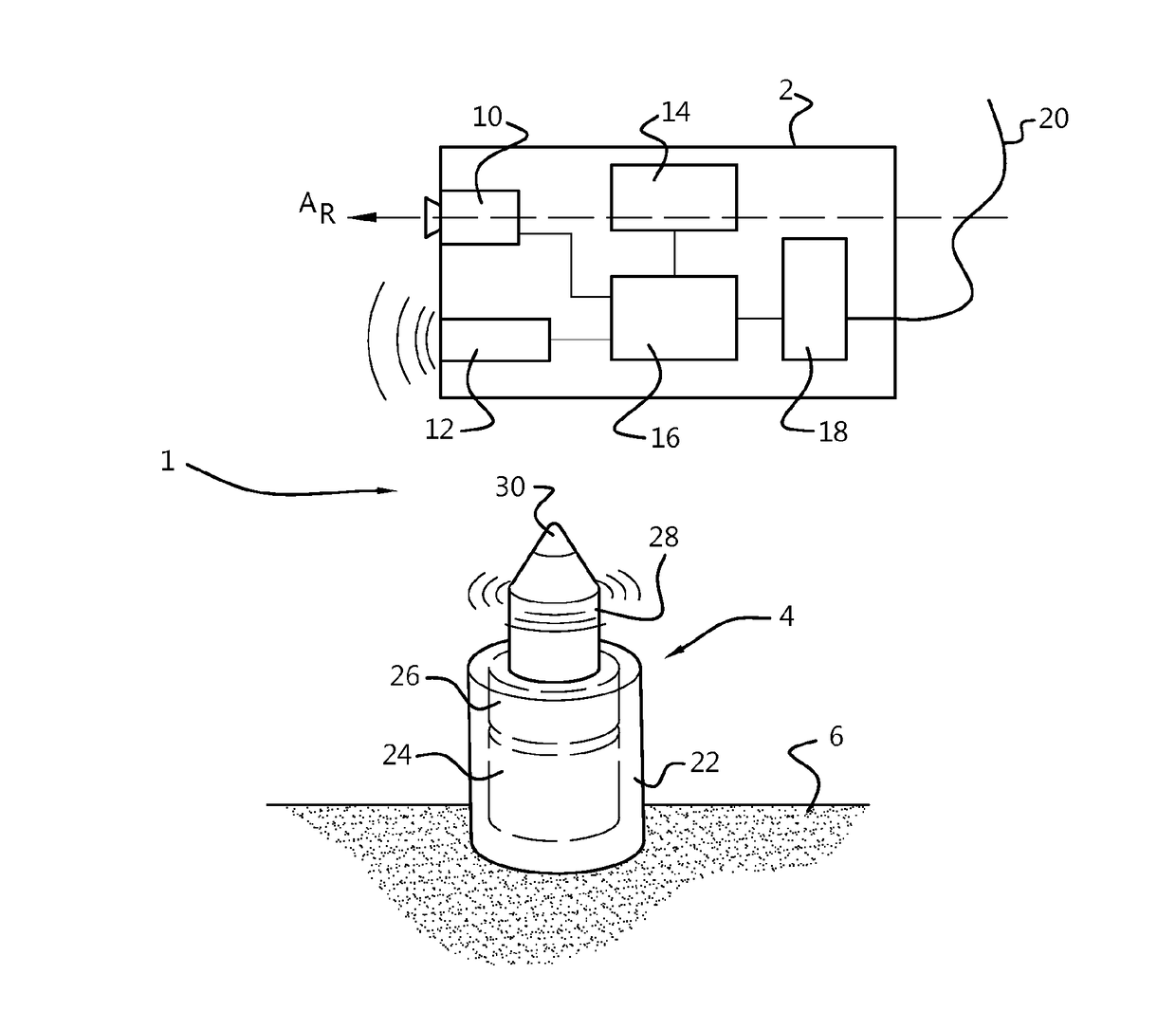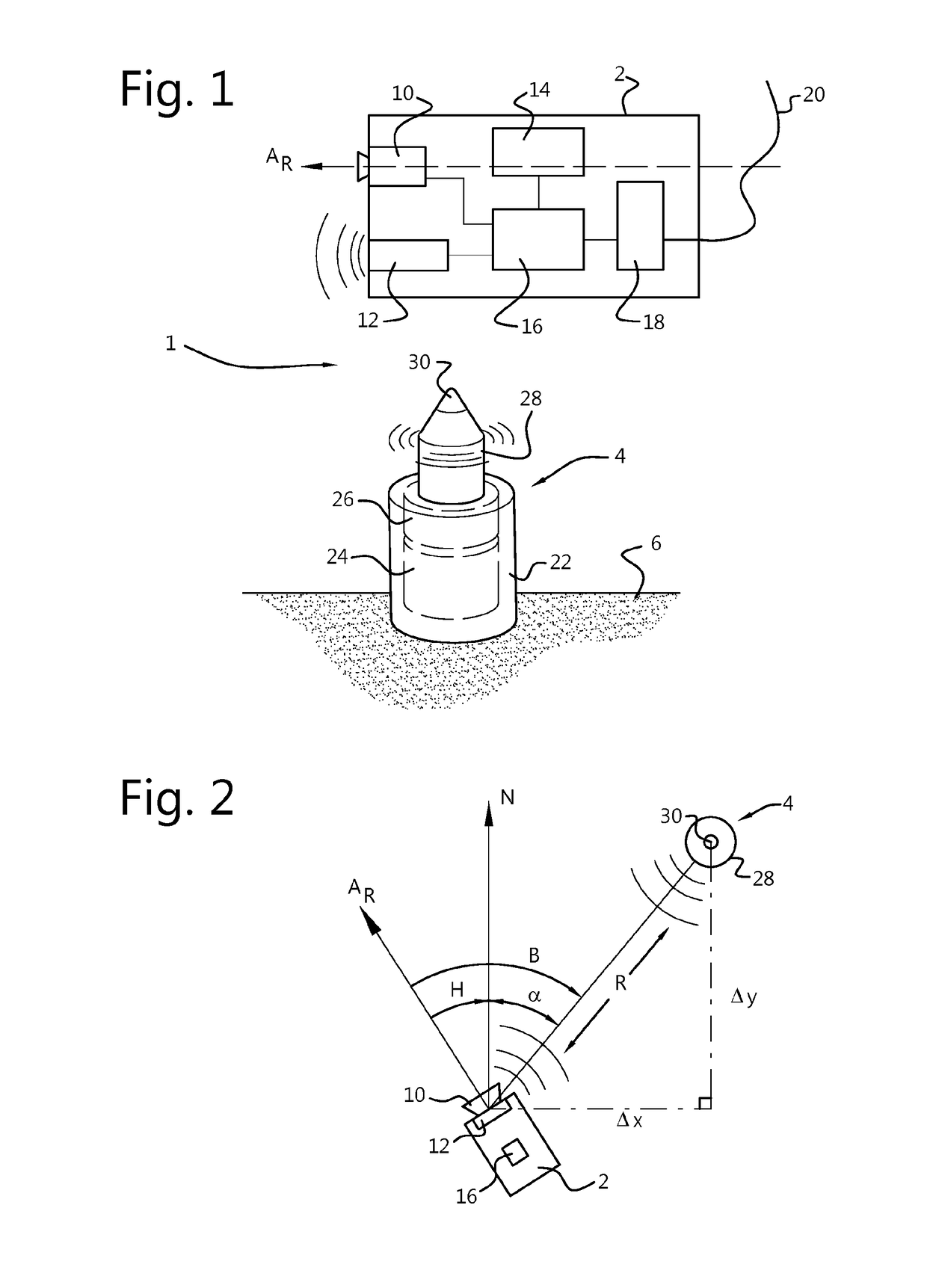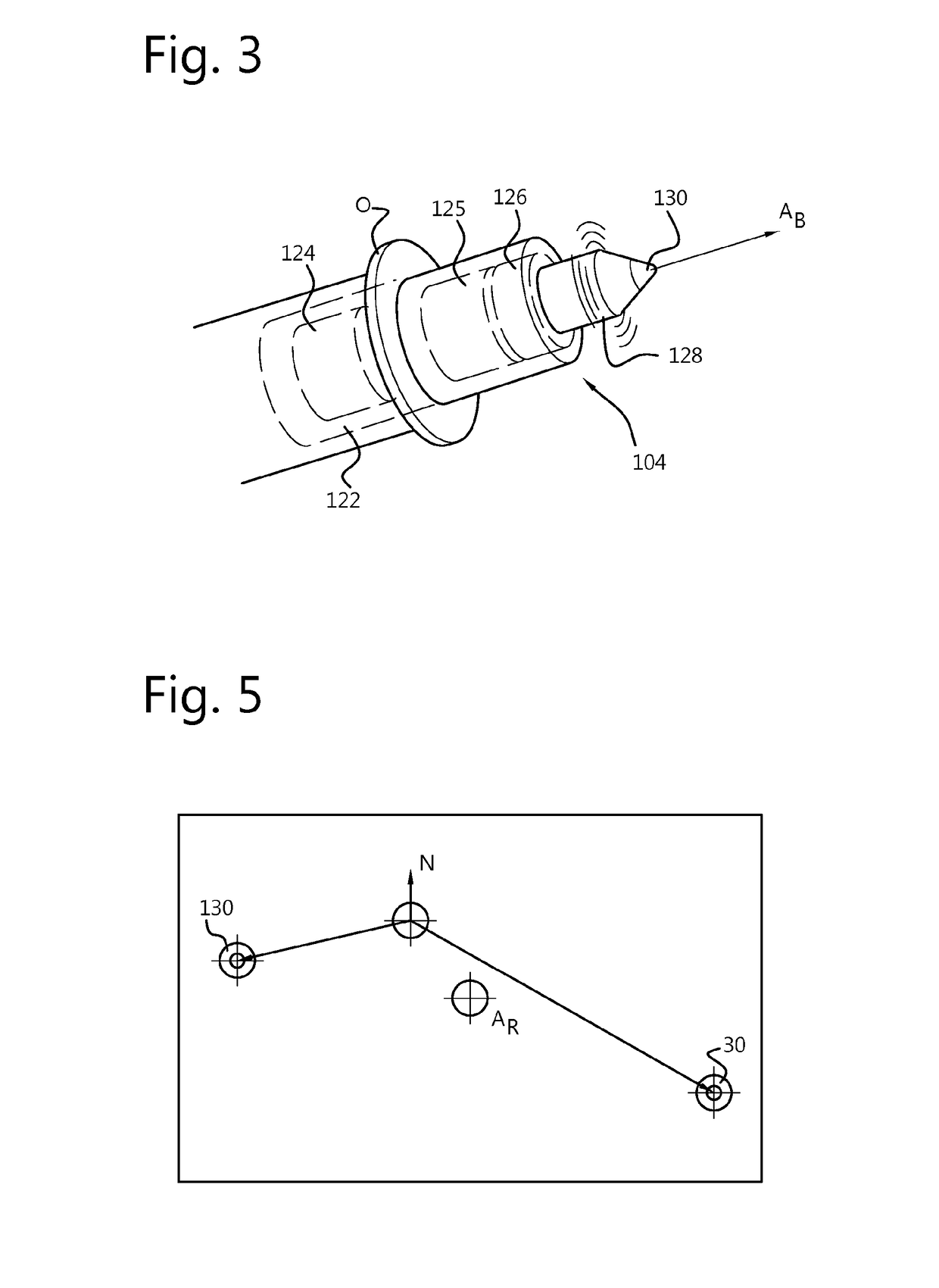Underwater positioning system
a positioning system and underwater technology, applied in vehicle positioning/course/altitude control, process and machine control, instruments, etc., can solve the problems of devices being sensitive to subsea noise and image processing being more complex, and achieve greater redundancy and fault tolerance, less data, and enhanced resulting calculations
- Summary
- Abstract
- Description
- Claims
- Application Information
AI Technical Summary
Benefits of technology
Problems solved by technology
Method used
Image
Examples
first embodiment
[0101]FIG. 1 shows a schematic view of an underwater positioning system 1 according to a The system comprises an ROV 2 and a beacon 4, both being suitable for underwater operation, the beacon being located on the seabed 6. The ROV 2 includes a photogrammetric camera 10, an acoustic transceiver 12, an orientation sensor 14, processor 16 and a communications interface 18, which connects with an umbilical 20. The ROV 2 may be a generally conventional device as used for underwater operations and survey and will be further provided with all of the necessary facilities for maneuvering itself and other objects and for communicating with the surface. It will also be understood that although the embodiments are explained with reference to an ROV, the same principles may be applied to completely autonomous vehicles and to handheld rovers carried by a diver or the like. The camera 10 is a calibrated wide-angle camera having a field of view of around 120 degrees and directed to produce an imag...
second embodiment
[0108]FIG. 6 shows part of a positioning system 101 according to the invention. The system 101 includes an ROV 102 with additional capabilities and is shown in operation to survey a first underwater object O1. The ROV 102 is similar to that of FIG. 1 and like features are designated with similar reference numerals preceded by 100. According to FIG. 6, the ROV 102 has first and second cameras 110, 111, located a distance apart and both directed forwards, allowing stereoscopic vision. Furthermore, the ROV 102 is provided with an INS 113, a depth gauge 115 and a laser line scanner 117 allowing 3-D perception of objects within image range. Also shown in FIG. 6 is a passive beacon 204 located on the seabed 6 close to the object O1. The passive beacon 204 is similar to beacon 2 of FIG. 1 but comprises only a light source 230 and battery 224, without acoustic transponder or further electronics or communication capability. For the sake of clarity, the beacons 4 and 104 having communication ...
third embodiment
[0111]FIG. 8 depicts a beacon 304 according to a Beacon 304 includes three light sources 330a, b, c located at three corners of a triangular frame 331 mounted on a base 322, including a transponder 328. The frame is isosceles in shape with the light sources 330b and 330c being closer together and light source 330A being relatively distant. The distances between the light sources 330a-c are carefully defined and can be used by an ROV to determine both scale and the direction in which the beacon 304 is pointed i.e. the location of light source 330a. It will be understood that the light sources 330a-c may also differ in color or be arranged to flash in different sequences should additional identification be required.
PUM
 Login to View More
Login to View More Abstract
Description
Claims
Application Information
 Login to View More
Login to View More - R&D
- Intellectual Property
- Life Sciences
- Materials
- Tech Scout
- Unparalleled Data Quality
- Higher Quality Content
- 60% Fewer Hallucinations
Browse by: Latest US Patents, China's latest patents, Technical Efficacy Thesaurus, Application Domain, Technology Topic, Popular Technical Reports.
© 2025 PatSnap. All rights reserved.Legal|Privacy policy|Modern Slavery Act Transparency Statement|Sitemap|About US| Contact US: help@patsnap.com



